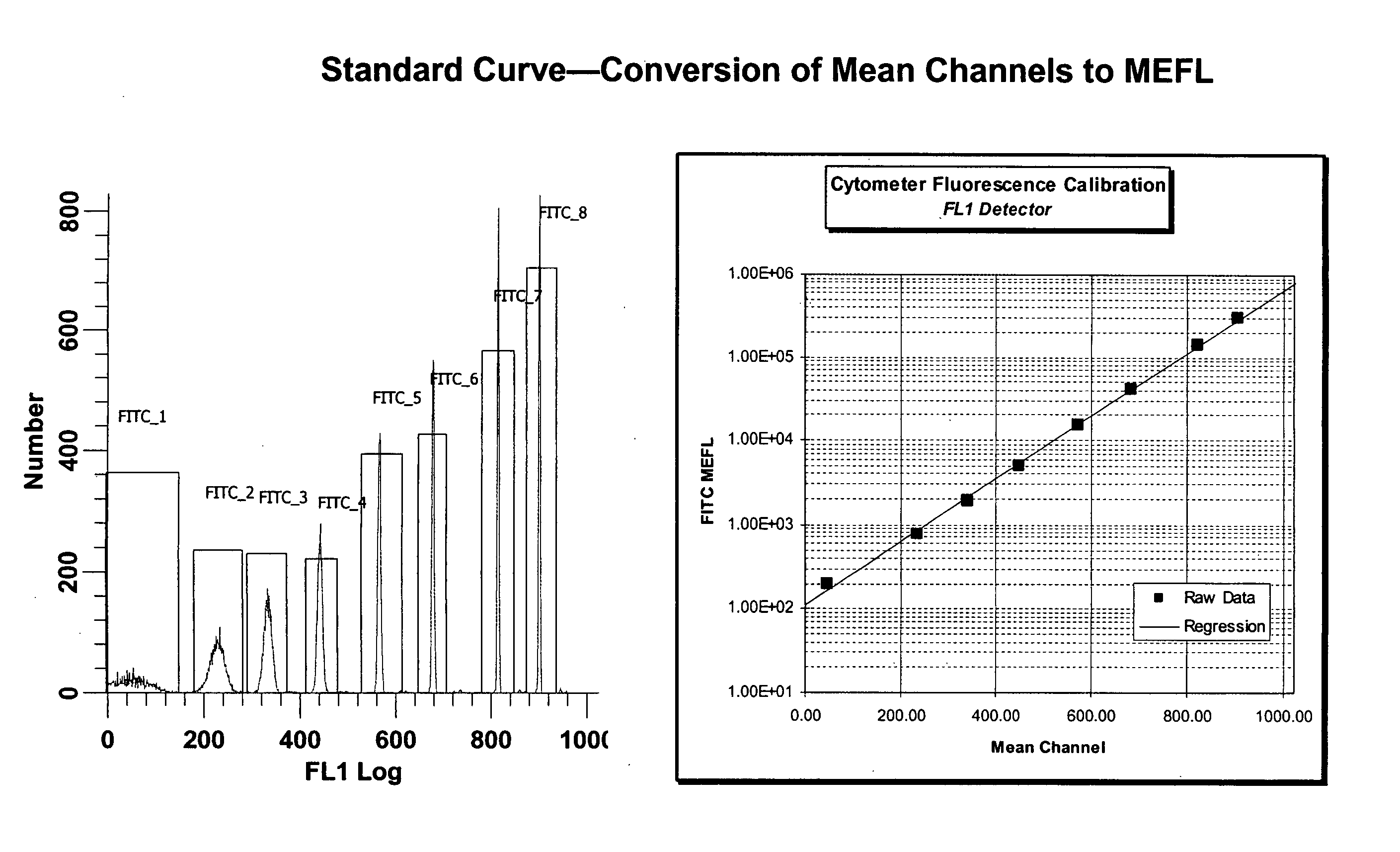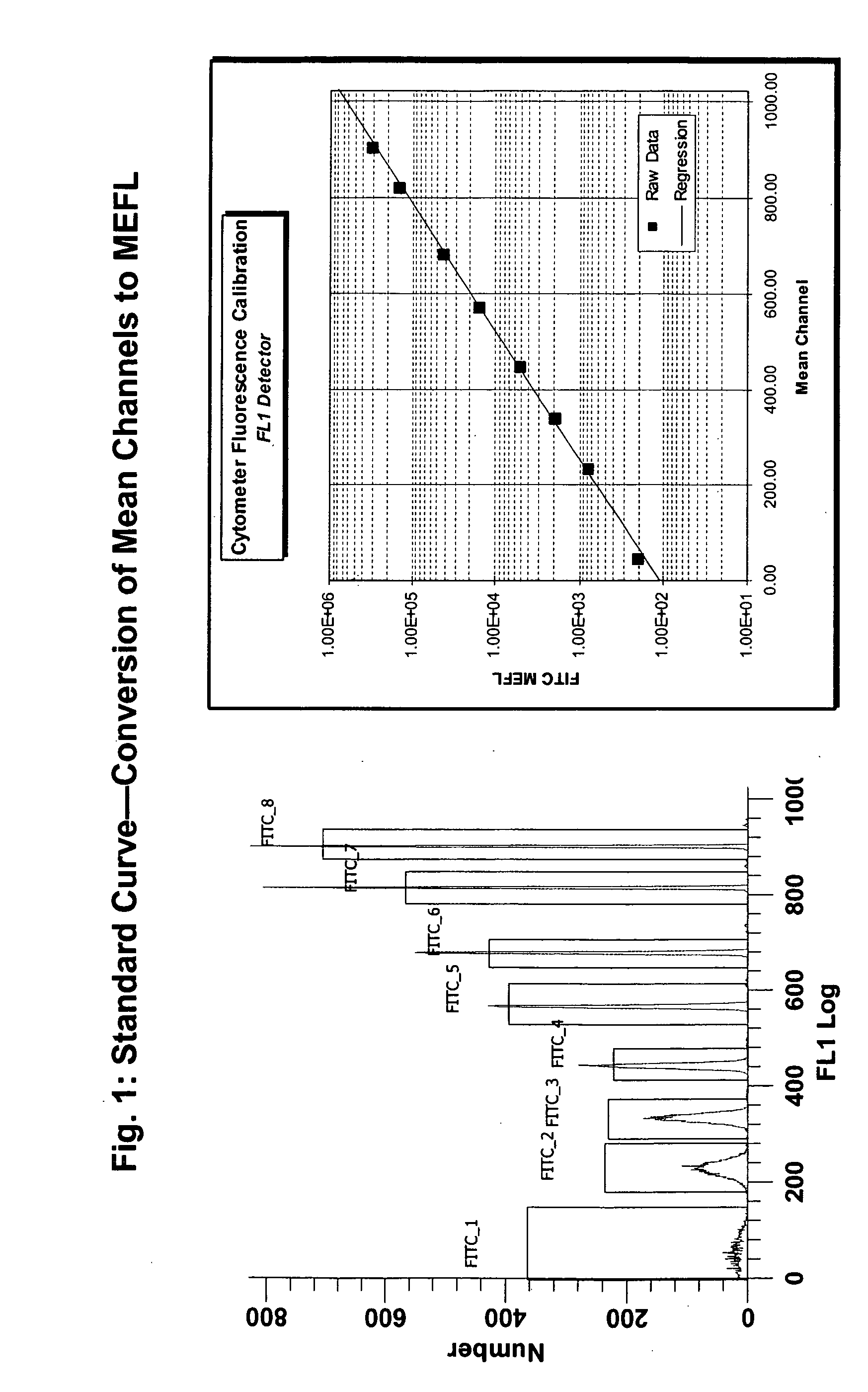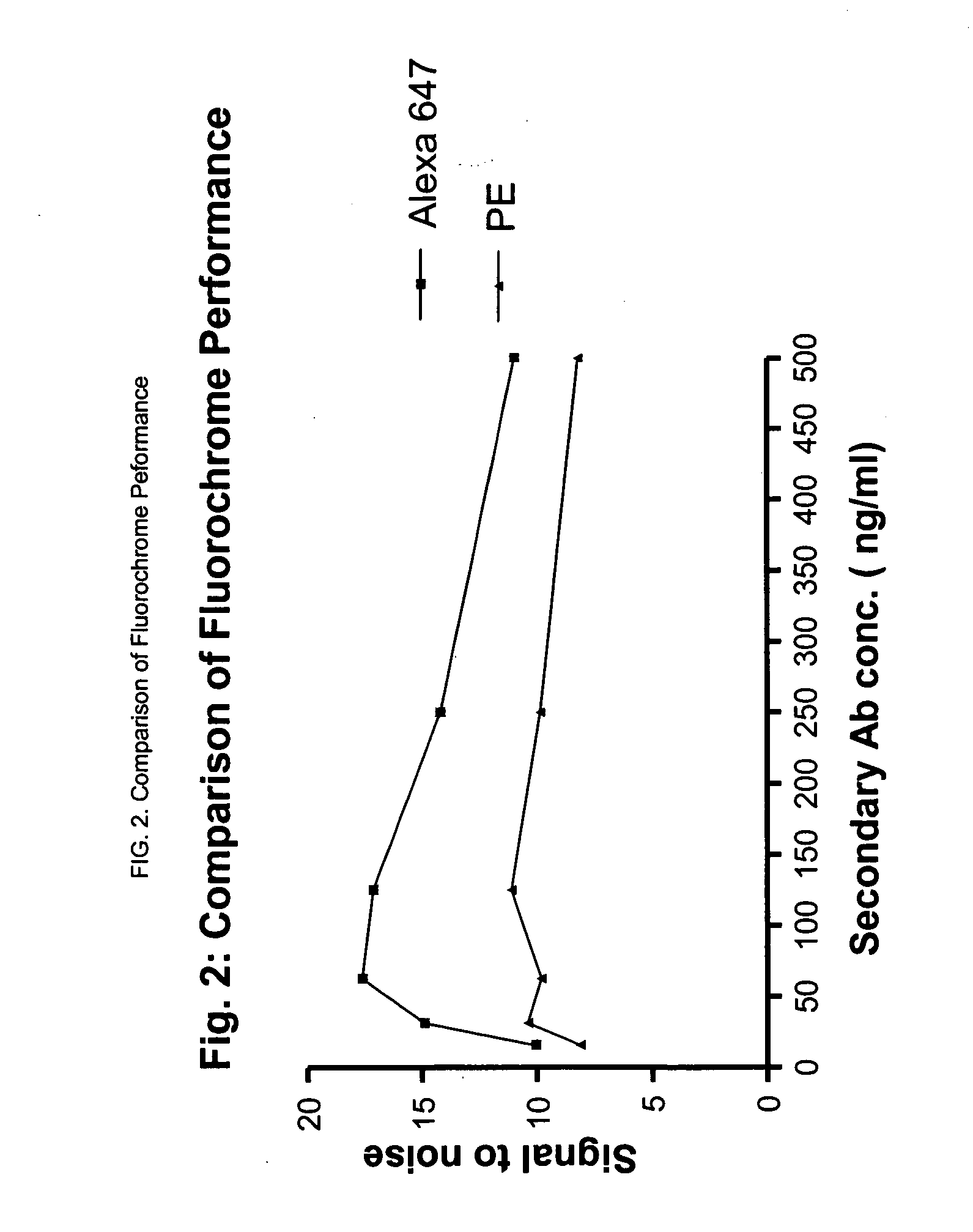Quantitative ZAP-70 assay
a quantitative and assay technology, applied in the field of improving the prognostic assay of zap-70, can solve the problems of poor precision, low copy number, and difficult to accurately detect the expression of zap-70 in clinical laboratories, and achieve the effect of improving the reliability of the assay
- Summary
- Abstract
- Description
- Claims
- Application Information
AI Technical Summary
Benefits of technology
Problems solved by technology
Method used
Image
Examples
example 1
Materials
[0034] The sample can be any bone marrow or peripheral blood sample that is received in ACD, Sodium Heparin, or EDTA. In a preferred embodiment the sample is a fresh heparin sample. In addition to standard laboratory equipment, the following was used herein:
TABLE 3Equipment and reagentsCytometer with filters for FITC, PE, Alexa fluor ® 647, and Alexa fluor ® 700.anti-ZAP-70 Alexa fluor ® 647 (Cell Signaling Technology #2705)Buffer QC (1.0 M NaCl, 50 mM MOPS pH 7.0, 15% isopropanol (v / v))Microsoft ™ Excel 2000 ™Newborn Calf SerumPBS + 2% NCSPermiFlow (Invirion ™ Corp. # 55001, Reagent #1)PermiFlow Working Solution (1:1 mixture of PermiFlow ™ and Sigma ™ water RNAse / DNAse free)Rainbow calibration particles (Spherotech, ™ Inc., Cat. #RCP-30-5A)RPMI (Invitrogen ™ #11875119)Surface Antibody Cocktail containing anti-CD5-FITC and anti-CD19-PEWater (Sigma ™ #W4502)WinList ™ Version 5.0 (Verity Software House ™)
[0035]
TABLE 4AntibodiesCell TypeAntibodySourceT-cellsanti-CD5-FITCImm...
example 2
[0036] About one million WBC cells / ml are needed for each patient sample. The antibodies employed are shown in Table 4, above.
[0037] Deliver 100 μl of adjusted blood sample to a 12×75 mm tube. Add titered amounts of Surface Antibody Cocktail or if cocktail is unavailable, use titered amounts of anti-CD5 FITC and anti-CD19 PE antibodies to prepare a “hand-made” cocktail. Vortex to mix. Allow to incubate in the dark for 20 minutes.
[0038] Wash tubes in 4 ml of PBS+2% NCS. Spin at 1300 rpm for 5 minutes, decant, and blot. Add 4 ml of prepared PermiFlow Working Solution to each tube and pipet up and down until there is no RBC pellet adhered to bottom of tube. Incubate at RT for 1 hour or at 4° C. overnight if test is to be completed the next working day.
[0039] Spin tubes to a pellet, decant, and add 4 ml of PBS+2% NCS, mix well with pipet. Spin to a pellet and repeat. If there is still a large amount of residual lysed red cell debris in the bottom of tube as indicat...
example 3
[0042] We used the BECKMAN COULTER™ FC500 or BECTON DICKINSON™ FACS CALIBUR FLOW cytometer herein, but any properly quality controlled flow cytometer that satisfies established windows of analysis can be used, provided the laser excitation lines and filter configurations are correct for the excitation and detection of all fluorescence labels used in the assay. In general, we collect 50,000 ungated events. Data was analyzed in WinList (VERITY SOFTWARE™) and Excel (MICROSOFT™) or equivalent. Exemplary results are shown in FIG. 1 through 6.
PUM
 Login to View More
Login to View More Abstract
Description
Claims
Application Information
 Login to View More
Login to View More - R&D
- Intellectual Property
- Life Sciences
- Materials
- Tech Scout
- Unparalleled Data Quality
- Higher Quality Content
- 60% Fewer Hallucinations
Browse by: Latest US Patents, China's latest patents, Technical Efficacy Thesaurus, Application Domain, Technology Topic, Popular Technical Reports.
© 2025 PatSnap. All rights reserved.Legal|Privacy policy|Modern Slavery Act Transparency Statement|Sitemap|About US| Contact US: help@patsnap.com



